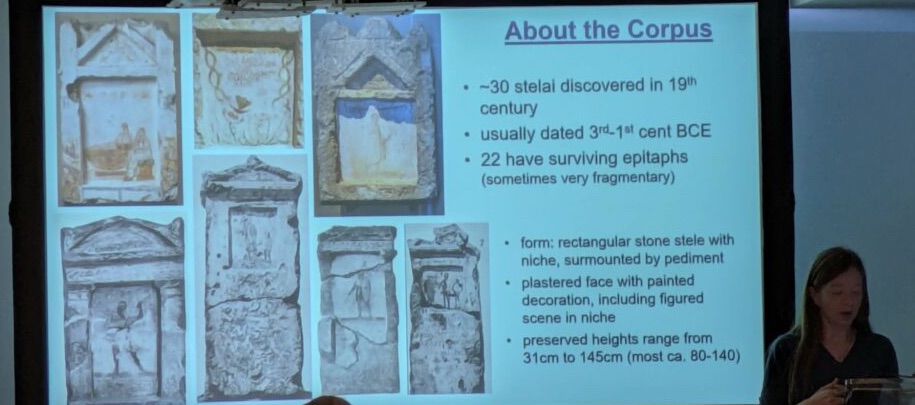Day 3
Digging up data

Brief reports from participants who have been working on projects in a mentored environment.
Most participants are working on their own with minimal support (financial/staffing).
Tools discussed: OCHRE (U. Chicago), TWINE, SCALER (ed tech platform), UCINet, ThingLink, and Tableau.
Big question — How will AI impact such projects?
Recurring note — most tech endeavors are by individual scholars building projects the technology for which then fades and is replaced by new approach’s and a new group of your scholars working on their own with limited resources.
Archaeology of Lebanon
Review of archaeological work on the island of Tyre. Reviewing evidence of Bronze Age settlements. But no trace of its legendary wealth and prominence. Funerary practices revealed in a cemetery. Surveys n the mainland show more consistent occupation in the Bronze Age.

A study of 30 stelae discovered in the 19th century and scattered in various museums.
- Many are stelae of soldiers
- Holding s shield
- Sometimes sponsored by comrades (action pose)
- Sometimes with family members
- Women in corpus
- on couches perhaps indicating death in childbirth.
- Standing woman with two toddlers at her feet — atypical… more like temple boy (Priestess with temple guardians?)
- Some without figures (butterflies)
- Males who are not soldiers
- Birds present

Some 50 documented Roman temples in Lebanon. Paper focussed on the Helios sanctuary of Qasr Naous,
Western temple is in poor shape although its compound is clear along with part of the podium. Presenter assumed the temple is tetra style. Some shafts were one piece. Other featured documented: Corinthian capitals, Bases, Consoles, Diagonal friezes, Typanon, and Angularium (only one in Lebanon)
Dated to 1st half of first century bc to 2nd AD.
Classical Archaeology
Greek drinking vessels were the primary finds among the Greek sherds. There were not sufficient other sherds to support a full Greek life. Same in other sites in the near Levant with Greek sherds.
A second paper was on Iconium, where work has recently begun. It is a large pre Roman site. Various pottery types and including a ceramic bath tube. South central Anatolian had significant Hellenistic influences and connections to the Greek coast.

The presenter suggested that Hadrian, after traveling to Gerasa, crossed the Jordan to the Roman camp near Bet Shean, and then made a trip to Tiberias (South Gate built in his honor), el Araj, Sepphoris, and then on to Caesarea Maritima. Some it the audience questioned the dating of certain elements of the hypothesis.